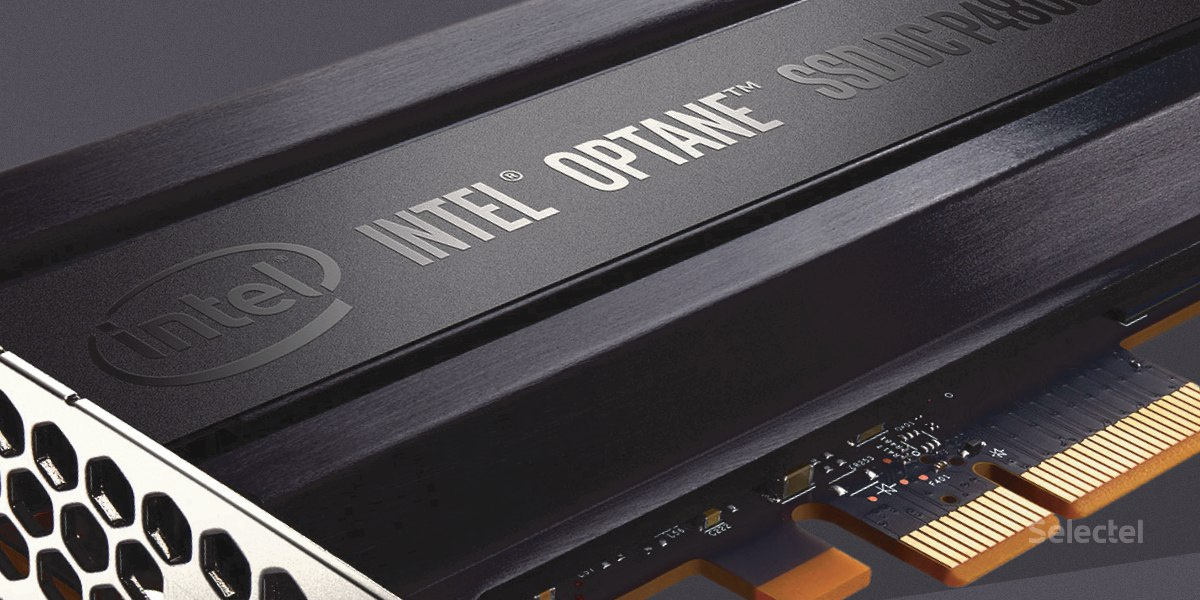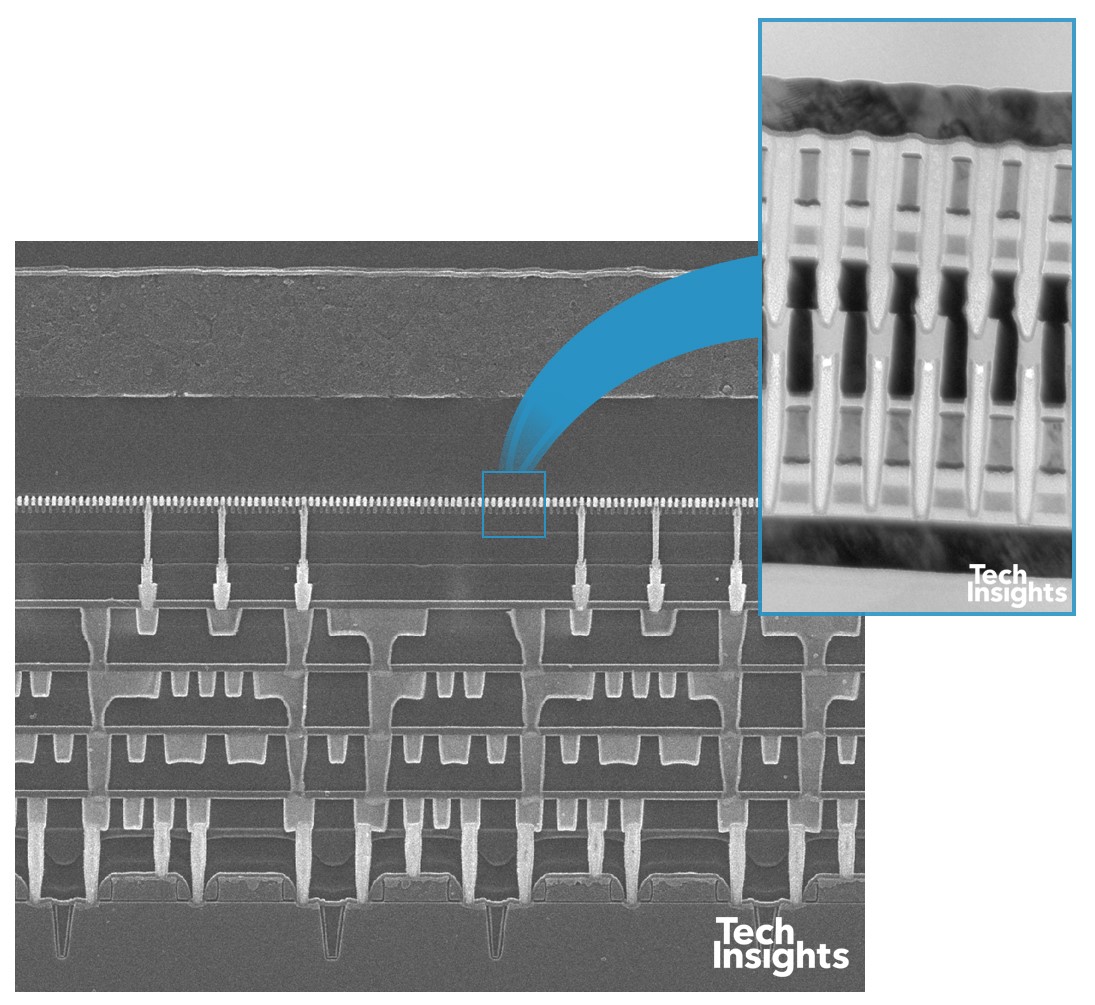Intel Optane SSD: features and benefits

In early July, we began testing Intel Optane SSDs for free . The action is still ongoing, and any of you can take part (details on the link above).
The appearance of Optane discs on the market can be called, without exaggeration, a revolution in information storage. In this article we will tell about what technologies underlie the new disks and what advantages they give.
3D X-point: new non-volatile memory
3D X-Point (read 3D crosspoint) is a new non-volatile memory technology based on phase transition (Phase-Change Memory, abbreviated to PCM).
The words about the revolutionism of Intel Optane, spoken at the very beginning, are much more than just a marketing ploy: in fact, we are dealing with the first case of launching this type of memory into mass production.
')
For obvious reasons, Intel does not disclose all the intricacies of 3D X-Point. Moreover, in public statements, the company denies that this memory is based on a phase transition. However, there are indirect evidence (see, for example, a good article on this topic), confirming the opposite. It is possible that the basis of 3D X-Point is some kind of hybrid technology.
Therefore, in what follows, we will rely on information published in open sources.
Phase Transition Memory: A Brief Reference
The idea of memory based on the phase transition is not new: it was proposed by the American inventor Stanford Ovshinsky back in the 1960s. In 1970, an article about PC technologies was published by Gordon Moore, one of the founders of Intel. Over the past 10 years, attempts have been made to start the production of such memory, but the obstacle to its widespread distribution was too large cell size, as well as too complicated technological process. This problem was solved only now. How exactly - Intel keeps a secret.
To understand how 3D X-Point works, let's recall what a phase transition is.
The phase transition is the transition of a substance from one thermodynamic phase to another when the external conditions change. Details are a task that goes far beyond the scope of this article; interested readers refer to Wikipedia , where everything is explained quite clearly and in detail.
The substances capable of making a phase transition include the so-called metalloids (they are also called semimetals , and it is this term that is more commonly used in Russian-language literature) - chemical elements that possess properties of both metals and non-metals. At room temperature, metalloids are insulators, and when heated they have electrical conductivity. Boron is usually used for doping, silicon - for the manufacture of standard transistors.
Other semimetals capable of making a phase transition and used in industry are germanium, arsenic, antimony and tellurium. As a result of compounds of these substances with metals, so-called chalcogenides are obtained. If they are mixed in the right proportions, they will have the following properties (illustration taken from Pcper.com ):

Pcper.com Illustration
Alloys of metalloids can go from one state to another, and the resistance changes. In the amorphous state, they are more like glass, and in the crystalline state - metal.
The two states have different electrical resistivity characteristics: an amorphous phase with greater resistance (logical unit), and a crystalline phase with a smaller one (logical zero). Because of this property, chalcogenides are good material for recording information. Actually, they have long been used for this: CD-RW and DVD-RW discs are made from materials based on chalcogenides.
Here is a table in which the memory based on the phase transition is compared with other types of memory (taken from here ):
| Property | PCM | EERPROM | NOR | NAND | DRAM |
|---|---|---|---|---|---|
| Non-volatility | Yes | Yes | Yes | Yes | not |
| Minimum element size, nm | <10 | ~ 4x | ~ 3x | ~ 1x | ~ 2x |
| Bitwise data change | Yes | Yes | not | not | Yes |
| Erase cycle required | not | not | Yes | Yes | not |
| Write speed | ~ 100 MB / s | ~ 30 KB / s | ~ 1 MB / s | ~ 20 MB / s | ~ 1GB / s |
| Read speed | 50 ... 100 ns | ~ 200 ns | 70 ... 100 ns | 15 ... 50 µs | 20 ..80 ns |
| Number of rewrite cycles | 10 6 ... 10 8 | 10 5 ... 10 6 | 10 5 | 10 4 ... 10 5 | not limited |
3D X-Point: Main Specifications
Having considered the general principles of memory operation based on the phase transition, we proceed to the description of the 3D X-Point device. Let's start with the analysis of technical characteristics (here we rely on materials from the site TechInsights ).
The size of the 3D X-Point memory module is 17.6 × 13.7 mm (241.12 sq. Mm); The only X-Point memory crystal is located inside. The size of the crystal is 16.16 millimeters in length and 12.78 millimeters in width. The on-chip memory efficiency is 91.4%. This is more than that of Samsung 3D 48L V-NAND (70%) and Intel / Micron 3D FG NAND (84.9%).
The data recording density of the 3D X-Point memory is 0.62 Gbit / sq. Mm, which is much lower than many 2D NAND and 3D NAND memory modules on the market. For comparison: Toshiba / SanDisk and Samsung 3D 48L TLC NAND 2.5 Gbit / mm are recorded at Toshiba / San Disk, while Toshiba / SanDisk 2D TLC NAND is 1.28 Gbit / mm². In this case, the DRAM memory value of this indicator is almost five times lower.
There is every reason to believe that the modules of RAM based on 3D X-Point will soon become widespread.
On the same TechInsights website, a photo of the X-Point 3D memory module chip was recently published:

TechInsights Illustration
As you can see, everything is arranged quite simply: the pairs from the selector and the memory cell are located at the intersection of two perpendicular rows of conductors (hence the name crosspoint, that is, the intersection) - the bit (bitline) and dictionary (wordline) bus. When voltage is applied, the selector is activated, resulting in a read or write.
The cells in the crystal are arranged in several layers - hence the abbreviation 3D in the title. The first generation 3D X-Point has a two-layer structure and is produced by a 20-nanometer process. Compared with NAND, the cell packing density of 3D X-Point is 8-10 times higher.
Phase-based memory is much faster than traditional flash memory. Experiments show that the recording time in a single cell of a PCM memory is 19 nanoseconds (for comparison, writing to a single flash memory cell takes several milliseconds).
An important advantage of such memory is durability: if flash memory can withstand up to 10,000 rewriting cycles, then 3D X-Point memory is up to 100,000,000 cycles!
Intel Optane SSD: Practical Benefits
The previous part of the article was devoted to theoretical aspects: we talked about 3D X-Point technology. Consider now practical questions and talk about the features and benefits of drives Intel Optane.
Bitwise memory access
A distinctive feature of flash memory is page-level access: to read or write a small portion of data, you need to manipulate large blocks of memory. This provides low latency, which is very important, for example, to work with loaded databases.
In drives based on 3 D X-Point technology, everything is different: just like in DRAM, bit-by-bit memory access is possible. This allows for 100 times lower latency compared to NAND memory, completely eliminating garbage collection operations and saving energy.
Intel Memory Drive Technology
Optane drives can be used not only for storage and caching, but also for expanding RAM. It is enough to install a special program ^ and the operating system will recognize Optane not as a disk, but as RAM. The system will be able to work with huge amounts of memory - much larger than those that provide for its architectural features. Data between RAM and Optane will be distributed automatically.
Intel Memory Drive technology can be used, for example, in the field of big data and machine learning: it allows large data vaults to be stored in memory and provide access to them with minimal delay (see the note on this topic here ).
Boosting memory with Intel Memory Drive technology is beneficial and from a purely financial point of view: 1GB of DDR4 memory costs about $ 10. In the case of Intel Optane, even at current far from low prices, the cost of 1GB will be a little more than 4 dollars - almost two and a half times cheaper!
Durability
The Intel site has this Intel Optane feature: 30 DWPD (drive writes per day). This means that the drive can be filled with information, then erased and rewritten again - and so 30 times.
Intel Optane is well suited for use, for example, as caching drives in cloud storage services or in corporate storage systems: they are able to withstand any load.
Another important characteristic of disk drives is TBW (Total Bytes Written), that is, the total amount of information that can be written to disk during the whole period of its operation. The value of this feature in Intel Optane is impressive: 12.3 Petabytes.
These figures indicate that the new drives are almost eternal, and fully justify their high price.
Conclusion
As already mentioned, we offer all our users to test drive new drives for free.
The promotion conditions are simple: you sign up for testing , we allocate you a server with an Intel Optane P4800x on board.
According to the results of testing, you publish an article-report on your website, blog or on any thematic resource.
And if you write a really interesting report, we will consider the possibility of its publication as a guest post in our corporate blog .
Source: https://habr.com/ru/post/335652/
All Articles